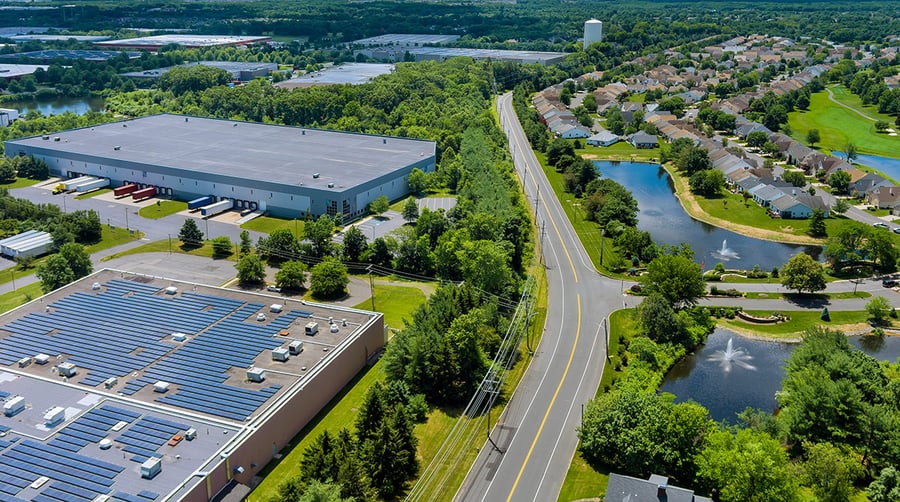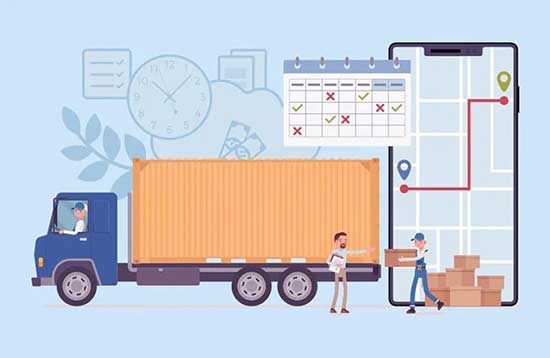

Amidst growing environmental concerns, businesses are increasingly adopting eco-friendly practices, particularly in warehousing operations. It is estimated that warehousing operations account for as much as 11% of the total greenhouse gas emissions generated by the logistics industry. Hence, this shift is not just about reducing the carbon footprint; it's about creating a more efficient, cost-effective, and resilient supply chain. At the core of this transformation are Warehouse Management Software, which are now being designed or reconfigured to support green warehousing initiatives.
As we progress further into the information age and confront the ongoing impacts of climate change, informed consumers increasingly expect companies to adopt environmentally and socially responsible practices, such as implementing sustainable warehousing solutions. Integrating sustainable logistics practices into warehousing operations within the supply chain can lead to improved productivity and positively affect a company's financial performance. Moreover, adopting sustainable practices in warehousing not only provides a rapid return on investment (ROI) but also contributes to long-term global benefits, meeting the expectations of stakeholders.
The Rise of Green Warehousing
Green warehousing refers to the implementation of sustainable practices within the warehousing and logistics sector. It encompasses a wide range of activities - from reducing energy consumption and minimizing waste to optimizing resource use and enhancing supply chain transparency. A recent study by Allied Market Research, titled "Green Logistics Market," revealed that the worldwide market for green logistics stood at $1.3 trillion in 2022 and is expected to surge to $2.9 trillion by 2032, with an annual growth rate of 8.3% between 2023 and 2032. The aim is to mitigate the environmental impact of warehousing operations while also yielding economic benefits through improved efficiency and reduced costs. Warehouse management software and solutions have become pivotal in achieving these green objectives. By leveraging data analytics, IoT technologies, and automation, WMS can significantly enhance operational efficiency, thereby contributing to sustainability goals.
Key Sustainability Trends in Warehouse Management Solutions for 2024
Energy-Efficient Technologies
One of the primary focuses of sustainable warehouse management solutions is the integration of energy-efficient technologies. Automated and robotic systems, for instance, are being increasingly used to reduce the reliance on manual labor, thereby lowering energy consumption. According to Mckinsey, warehouse automation is experiencing a significant surge in popularity, receiving recognition within the Fourth Industrial Revolution after years of being on the fringes. The automation industry as a whole is expanding quickly, with projections from some experts indicating that shipments of robots could see annual increases of up to 50% through to 2030. Specifically, the sector of warehouse automation is expected to grow by over 10% annually.
Moreover, smart lighting systems and energy management software are being integrated into Warehouse Management Software to monitor and control energy use in real-time, significantly reducing the carbon footprint of warehouse operations. The whole technology scenario around warehouse management systems has undergone a massive overhaul in the past few years, hence while selecting the right WMS, businesses should consider few critical aspects such as internal introspection, solution scouting, and implementation methodology for a successful and sustainable journey. As we look to the future, the potential for WMS to drive sustainability in warehousing is boundless. Emerging technologies, such as artificial intelligence (AI) and blockchain, promise to further enhance the capabilities of WMS in promoting eco-friendly practices. AI could enable more sophisticated predictive analytics for demand forecasting and route optimization, while blockchain technology could provide unparalleled transparency in supply chains, ensuring the ethical and sustainable sourcing of materials.
Waste Reduction and Recycling Initiatives
Waste management is another critical aspect of green warehousing. Waste reduction goes beyond mere recycling efforts; it encompasses a holistic approach to the entire supply chain. Warehouse management solutions contribute by optimizing inventory levels, reducing the need for excess materials that may end up as waste. Through sophisticated algorithms, these systems ensure that products are ordered and stocked in quantities that match demand forecasts, minimizing overstock and obsolescence. Modern warehouse management systems are equipped with features that support inventory accuracy and optimization, thereby reducing overstocking and minimizing waste. Furthermore, these systems can also facilitate recycling processes by tracking the disposal of materials and identifying opportunities for reusing packaging materials, ultimately contributing to a circular economy.
Optimization of Supply Chain Logistics
Efficient logistics planning and load optimization are key sustainability trends in logistics software. By minimizing the distance traveled and ensuring vehicles are fully loaded, Warehouse management software can significantly reduce fuel consumption and emissions. Additionally, the use of electric or hybrid vehicles is being encouraged, further promoting sustainable logistics practices. This also includes warehouse layout optimization, ensuring that goods are stored and retrieved in a manner that minimizes energy use and material handling. WMS can simulate different layout configurations and operational strategies to find the most efficient setup, reducing the distance that workers and machines need to travel. This optimization reduces the environmental impact of logistics operations, contributing to lower greenhouse gas emissions and reduced fuel consumption.
Renewable Energy Adoption
The shift towards renewable energy sources, such as solar and wind power, is becoming increasingly prevalent in warehouse operations. Incorporating renewable energy into warehouse operations involves strategic planning and investment. Warehouse Management Software plays a crucial role in this transition by integrating with renewable energy systems to optimize their use and ensure that operations are powered in the most sustainable way possible.
Enhanced Transparency and Sustainability Reporting
Sustainability goes beyond just implementing eco-friendly practices, it also encompasses transparency and accountability. Modern warehouse management solutions are now equipped with features that enable businesses to track their sustainability performance and report on various metrics, such as carbon emissions, energy consumption, and waste reduction. This not only helps in meeting regulatory requirements but also in building trust with consumers who are increasingly demanding ethical and sustainable business practices. In an era where consumers and regulatory bodies demand higher environmental standards, the ability to provide transparent and verifiable data on sustainability efforts is invaluable.
The Impact of Sustainable WMS on Operations
The implementation of sustainable practices through Warehouse Management Solutions has a profound impact on warehouse operations. It leads to significant cost savings by optimizing energy use, reducing waste, and improving overall operational efficiency. Moreover, it enhances brand reputation and customer loyalty, as businesses are seen as responsible and forward-thinking.
Furthermore, sustainable warehousing practices contribute to regulatory compliance, helping businesses to avoid penalties and benefit from incentives related to environmental protection. It also fosters innovation, as companies are pushed to explore new technologies and practices that can further enhance sustainability.


